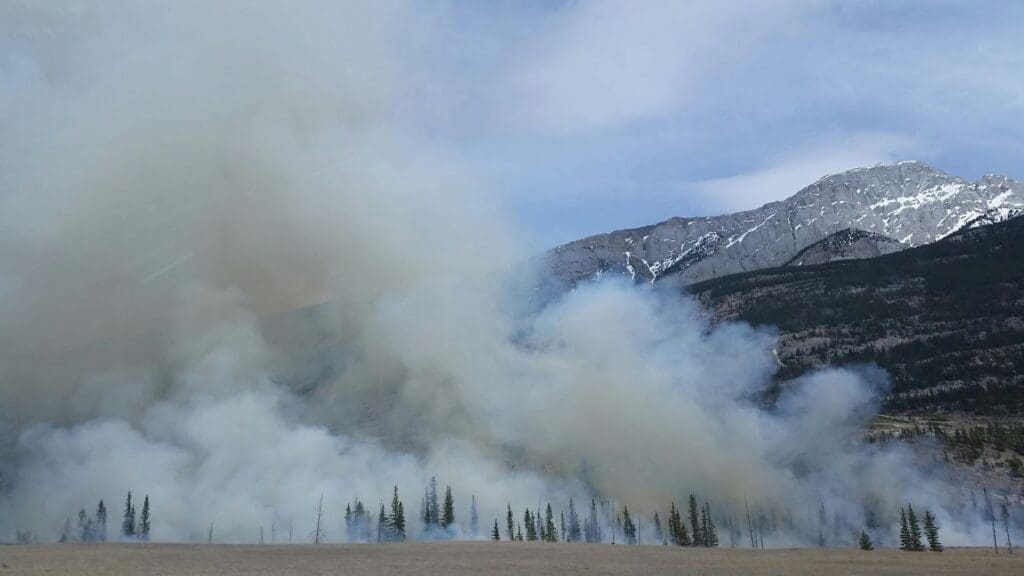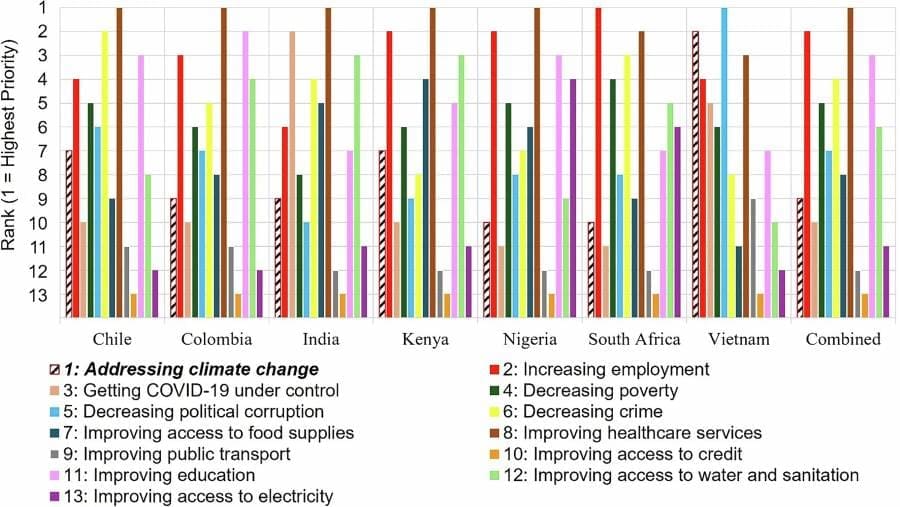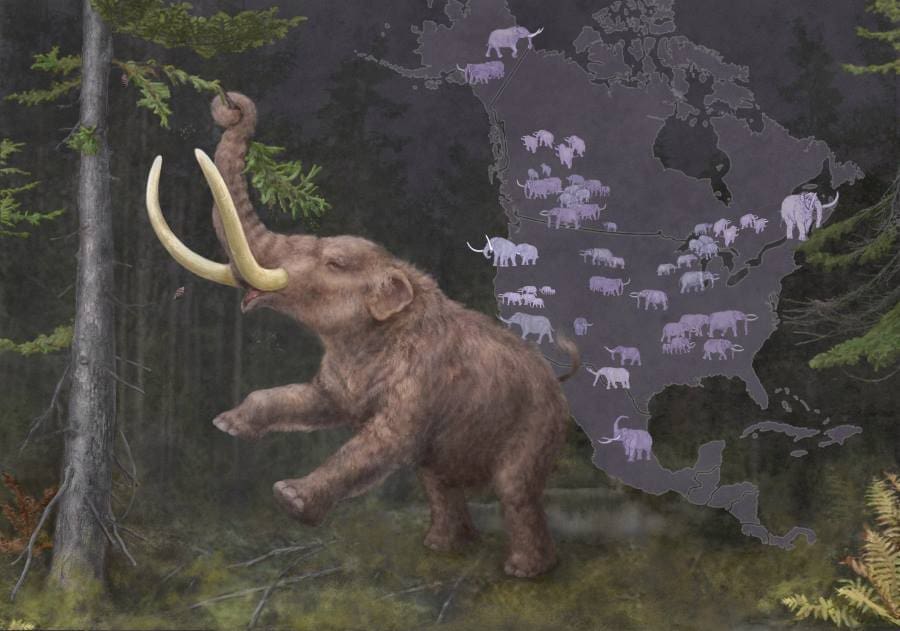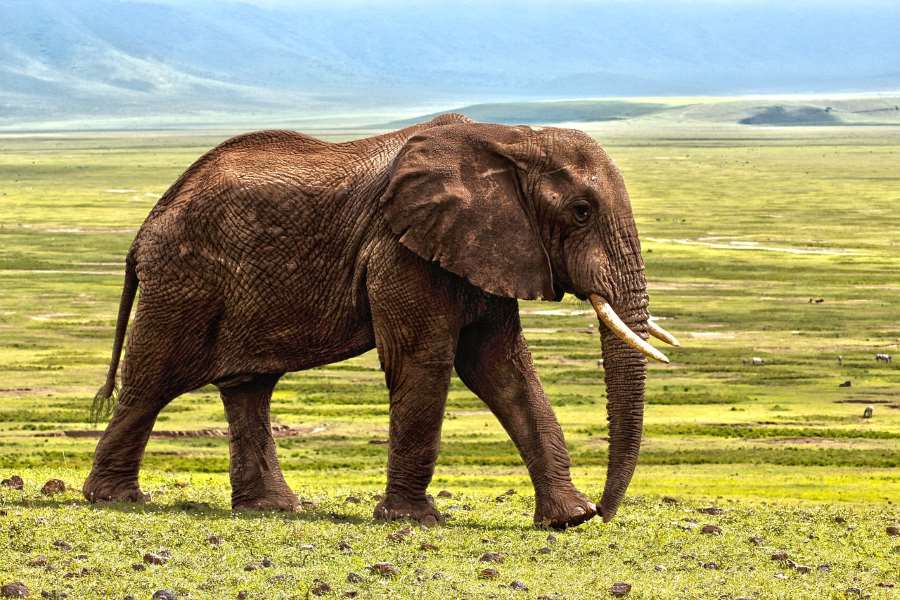Explore the latest insights from top science journals in the Muser Press daily roundup (September 12, 2025), featuring impactful research on climate change challenges.
In brief:
Analyzing impact of heat from western wildfires on air pollution in the eastern US
The authors of this study report that wildfires in the western United States are worsening air quality in the West but, paradoxically, may be improving it in the East. Over recent decades, wildfires in the western United States have become more frequent and intense, releasing vast amounts of smoke, which can greatly degrade air quality both locally and in regions far downwind. Often assumed to worsen when wildfire smoke drifts eastward from the West, fine particulate pollution (PM2.5) from wildfires has long been a major health concern in the eastern United States, potentially contributing to thousands of premature deaths each year.
While this conventional wisdom has long informed air quality and fire management policies nationwide, the intense heat released by fires, which is capable of altering air temperatures, destabilizing the atmosphere, and driving strong convection, isn’t fully understood. Because wildfire heat can alter large-scale atmospheric circulation, its role in shaping distant air quality has been underappreciated. Most climate models consider only smoke emissions and not fire heat, which may explain why they tend to overestimate wildfire-driven pollution in the East.

Using both observational data and climate model simulations that incorporate daily heat measurements, Qihan Ma and colleagues found that, during extreme wildfires in the West, PM2.5 actually declines in the East, not only during extreme events but also throughout the fire season. This occurs because the intense heat released by large fires drives strong convection, which changes weather patterns, suppresses eastward smoke transport, and promotes rainfall that helps cleanse the air. However, while fire heat can improve air quality in the East, wildfires still worsen pollution in the West.
According to Ma et al., ignoring fire heat in current climate models leads to inflated nationwide health and economic impact estimates – by about 1,200 premature deaths and $3.3 billion in damages – highlighting the need for policies that recognize its role in shaping regional air quality and environmental equity.
“The differential impacts of wildfires necessitate the more appropriate allocation of resources and policy intensity for fire management and regional pollution control,” write the authors. “With greening in a warming world, the accumulation of fuels will lead to increased fire heat release when wildfires occur. It is imperative to consider fire heat in the Earth system when conducting comprehensive climate simulations and wildfire risk assessments.”
In a related Perspective, Yun Qian discusses the study and the implications of its findings in greater detail.
Journal Reference:
Qihan Ma et al., ‘Fire heat affects the impacts of wildfires on air pollution in the United States’, Science 389, 6765, 1137-1142 (2025). DOI: 10.1126/science.ads1957
Article Source:
Press Release/Material by Walter Beckwith | American Association for the Advancement of Science (AAAS)
Survey across the Global South sheds new light on support for climate policies
The study highlights both the depth of climate knowledge in these countries and the trade-offs citizens face when weighing climate policies against other urgent needs.
Unlike many surveys that rely on simple “agree–disagree” statements, this study asked participants to make explicit choices between competing government spending priorities. While climate action was widely rated as important, its priority dropped when respondents had to compare it directly with areas such as health, education, or poverty reduction.

Science is the most trusted source
“This approach gives us a much richer picture of public opinion,” says Gunnar Köhlin, co-author of the study and Director of the global research network Environment for Development (EfD) which is coordinated by a Global Hub at the University of Gothenburg. “If you only ask people if climate change is important, the answer is overwhelmingly yes. But when people face trade-offs, climate action often slips behind immediate concerns like healthcare or jobs.”
The survey, which included 8,400 respondents, also showed that the level of climate knowledge in the Global South is closer to that in the Global North than expected. Climate knowledge is also a stronger predictor of support for ambitious climate policies than education level. Scientists were rated as the most trusted source of information, ahead of governments, businesses, and the media.
Strong support for earmarking revenues
Another striking finding is that citizens showed strong support for earmarking revenues from carbon taxes for health and education programs, rather than using them to reduce deficits or pay back directly to households.
“Understanding how people in the Global South think about climate change is crucial. These countries are home to the majority of the world’s population and are both highly vulnerable to climate impacts and important actors as we look for solutions to climate change,” emphasizes Köhlin.
The EfD network conducted the study, with support from the Swedish International Development Cooperation Agency (Sida), and fielded by survey firm YouGov. The findings provide a valuable dataset for policymakers and researchers seeking to align climate action with public priorities in developing economies.
Journal Reference:
Carson, R.T., Lu, J., Khossravi, E.A. et al., ‘The public’s views on climate policies in seven large global south countries’, Nature Climate Change 15, 954–962 (2025). DOI: 10.1038/s41558-025-02389-9
Article Source:
Press Release/Material by University of Gothenburg
Ancient DNA reveals deeply complex Mastodon family and repeated migrations driven by climate change
In a new study published in the journal Science Advances, researchers from McMaster University and Harvard provide new evidence which significantly revises and reshapes our understanding of the species’ deeply complex evolutionary history.
Well-preserved fossilized specimens of teeth, tusks and bone – dating back hundreds of thousands of years – coupled with new scientific techniques, have allowed researchers to reconstruct genomes from ancient, tiny, degraded DNA fragments.
They reconstructed the mitochondrial genomes from several mastodon specimens: five from Nova Scotia and the eastern seaboard, one of which may date to approximately 500,000 years ago, and for the first time, a unique specimen of a Pacific mastodon from Tualatin, Oregon, in addition to a partial mitochondrial genome from Northern Ontario.

Mastodons were initially split into numerous separate species but later consolidated back into a single one – Mammut americanum. More recently, this classification has been revised to potentially include at least two distinct species: the American and the Pacific mastodon (M. pacificus), although a debate over the split has persisted.
The genetic analyses confirm the Pacific mastodons belong to a very old, well-established and separate genetic branch, with a range that extended much farther than previously believed – reaching deep into the Pacific Northwest, possibly south to Mexico, and as far north as Alberta.
Interestingly, Alberta appears to have been a ‘hot spot’, say scientists, where Pacific and American mastodons congregated, expanded northward and may have interbred.
The East Coast and Northern Ontario specimens revealed two new and distinct genetic groups, known as clades, of mastodons living in the same region but at different times. The eastern species were surprisingly diverse, arriving in distinct waves of migration at least three times – a pattern driven by repeated cycles of climate warming, leading to glacial melting and the opening of new territory for northward expansion. When climate cooled and glaciers expanded, mastodons were driven south or went locally extinct.

“The data shifts our view of the region today known as Alberta and the north more generally, from a marginal roaming ground to a repeatedly occupied migratory corridor and significant landscape for mastodons with possible interbreeding,” says senior author and evolutionary geneticist Hendrik Poinar, director of the McMaster Ancient DNA Centre and the Michael G. DeGroote Chair in Genetic Anthropology.
Researchers also pinpointed a mysterious and genetically distinct Mexican mastodon lineage, which they believe could be a deeper branch of the western species M. pacificus or possibly an entirely new, third mastodon species.
The mastodon was among the largest living land animals on Earth during the Ice Age, roaming from Beringia (present-day Alaska and the Yukon) east to Nova Scotia and south to Central Mexico. They were primarily browsers, living in swampy settings, eating shrubs and low-hanging tree branches, and occupied a very different habitat from their distant cousins, the Ice Age iconic woolly mammoths which roamed on open grasslands and tundra.
“This study represents several firsts which includes our work on the Pacific mastodon. It also poses many new questions. For example, how did these distant species of mastodon interact in Alberta? Did they compete for resources, or did they interbreed as our lab has previously shown for mammoths?” says lead author Emil Karpinski, a former graduate student at the McMaster Ancient DNA Centre, now a research fellow in the Department of Genetics at the Harvard Medical School.
These new findings, combined with those reported in a 2020 study conducted by the same team, create a much more complete picture of how mastodons moved and diversified across North America, helping conservationists today prepare for an ever warming artic and northern migrating species, say researchers.
The paper’s co-authors also included Sina Baleka, a postdoctoral researcher at the McMaster Ancient DNA Centre; Andrew Boehm, senior archaeologist at the University of Oregon’s Museum of Natural and Cultural History; Tim Fedak, curator of geology at the Nova Scotia Museum of National History; and Chris Widga, director of Earth and Mineral Sciences Museum & Art Gallery at Penn State University.
Journal Reference:
Emil Karpinski, Sina Baleka, Andrew R. Boehm, Tim Fedak, Chris Widga, and Hendrik N. Poinar, ‘Repeated climate-driven dispersal and speciation in peripheral populations of Pleistocene mastodons’, Science Advances 11, 37: eadw2240 (2025). DOI: 10.1126/sciadv.adw2240
Article Source:
Press Release/Material by Michelle Donovan | McMaster University
Invasive plants are rapidly changing the tropics
Invasive species are reshaping ecosystems and local people’s relationship with nature in the tropics, a study led by Danish researchers Ninad Avinash Mungi and Jens Christian Svenning from Aarhus University shows.
The researchers found roughly ten thousand alien plants in the greater tropics – which is an area composed of both the tropic and sub-tropic parts of the world. “Especially islands, are invasion hotspots and some have more alien plants than native ones,” explains Ninad Avinash Mungi. But even though it sounds alarming, most alien species are not a problem. “Many alien species are imported for their usefulness and value, but few escape and become invasive with undesirable impacts,” he says.
In collaboration with scientists from Brazil, Ethiopia, India and the US, the two Danish researchers brought together their experience and a rich set of scientific evidence that offers critical insight into the rapidly changing greater tropics. In India for example, large areas have been overrun by the invasive plant Lantana camara – or Lantana, as it’s popularly known.
“In the last century, large areas in the Western Ghats of India became overrun by Lantana. This triggered the native forest-dependent Soliga people to abandon their traditional livelihood and migrate in search of alternatives,” Ninad Avinash Mungi says.

A worldwide problem
Lantana originally comes from the tropical Americas. It was brought to Europe by Dutch explorers in the late 1600s. In Europe it quickly became popular as an ornamental garden plant – and not before long the Portuguese brought it with them to their colonies, including that of India.
Today Lantana has spread to large parts of the greater tropics. In Australia it’s estimated that 4 million hectares of land are infested with the weed. In Hawaii that number is 160.000 hectares. And in India, Lantana has invaded 30 million hectares. “The invasive plant is, in other words, a huge problem around the world,” Ninad Avinash Mungi explains.
“Invasive plants like Lantana competitively suppress native food plants in forests and on savannas. Scarcity of food makes herbivores decline, which further affects the carnivores. We’ve seen examples of tigers preying on livestock when herbivores decline. Often this happens in very poor areas, where people are closely dependent on ecosystems. Invasive plants not only weaken the ecosystems, but can also create wildlife conflicts, thereby changing people’s relationship with nature,” he adds.
A problem as old as agriculture
Introducing new plants into ecosystems around the world is not a modern thing. It’s been going on since the dawn of agriculture. But it has accelerated in recent years, some studies show.
“The tropics have historically been changed by people for thousands of years. But the pace changed during the colonial era. People brought species from colony to colony spreading plants and animals all over the tropics. Global trade after WW2 has even further accelerated the process. Today species are being exchanged all the time,” explains Ninad Avinash Mungi.
Even though the phenomenon is old, it has only recently been mapped and studied. And the new studies gives an even broader view of the problem.
“Human-caused deforestation, wildlife extirpation, pollution and land-use transformations are important drivers of invasive plant spread. These changes weaken the natural control over alien plants, facilitating their spread. Thus, invasive plants are initially passengers of disturbances, but eventually become drivers of disturbances,” he says.
Climate change is leading to widespread ecosystem collapse and degradation, making the ecosystems more vulnerable to invasive species. In the study it’s highlighted how wildfires, rising temperatures and logging are contributing to trees and plants wilting and dying in the Amazon.
“In the Amazon invasive grasses are catalyzing this collapse by fueling wildfire, preventing native regeneration, eventually contributing to higher CO₂ emissions,” he explains.“Paradoxically, increasing levels of CO₂ in the atmosphere supports woody plants in place of grasses across savannas in the greater tropics. Here, woody invasive plants are benefitting from CO₂, fire-suppression, and loss of large herbivores.”

The good, the bad, and the novel
According to the two main researchers behind the study it is important to separate alien species with neutral and positive impacts from those that have undesirable impacts – which we often call invasive.
“While invasive species need focused management, other more neutral alien species can sometimes offer a positive ecological role, particularly when native species are struggling amidst a changing climate or have been removed by people,” professor Jens-Christian Svenning explains.
Global climate changes combined with these alien species are leading to new ecosystems developing around the world. These ecosystems may be more stable in a climate of rising CO₂, heatwaves and pollution. And alien species in these ecosystems can be prevented from becoming invasive by bringing more biodiversity, which is able to naturally control alien populations.
“Alien plants are often seen only as a threat, but in reality it’s more complex. Most alien plants are neutral, and some can even play positive roles – especially as climate change pushes ecosystems toward collapse. Understanding both the risks and the buffering potential is key for smart management,” explains Jens-Christian Svenning.
No easy fix
But managing forests and savannahs in a smart way isn’t easy. In many areas where invasive plants take hold, it’s often caused by human activity such as land-use change – “and that is not always possible to control,” explains Ninad Avinash Mungi. “The problem with managing widespread invasive plants is that it’s very costly to completely eradicate them, and the outcomes are uncertain, as the species can often re-invade. Since invasive plants have spread across the natural areas, they simply can’t just be bulldozed, as that can have several undesirable impacts on the ecosystems. A sustainable alternative is urgently needed.”
One such solution is what the two Danish researchers call Nature-based Solutions for Biological Invasions. A way of managing nature that they recently proposed in the scientific journal People and Nature.
Here they list several mechanisms across ecosystems to utilize to naturally control invasive plants. One example is to introduce large herbivores like buffaloes and elephants into floodplains and savannas. They will naturally restrict many invasive plants from spreading.
In some places though, invasive plants may have already replaced native species – or management resources are unavailable. In such areas, local communities are often compelled to accept invasive plants and adapt to take advantage of the invasive plants.
“In many places across the greater tropics, the locals have started using invasive plants like Lantana to build craft and furniture, Prosopis juliflora for biochar production, and water hyacinth for commercial products. They have, in other words, adapted to a new reality,” says Ninad Avinash Mungi. “Both our studies emphasize the importance of working in partnership with local communities when trying to manage invasive plants. Local communities are often more aware about the local ecosystem and about creative ways of management.”
Journal Reference:
Mungi, N.A., Galetti, M., Ratnam, J. et al., ‘Alien plants and novel ecosystems in the Greater Tropics’, Nature Reviews Biodiversity 1, 515–531 (2025). DOI: 10.1038/s44358-025-00068-3
Article Source:
Press Release/Material by Jeppe Kyhne Knudsen | Aarhus University (AU)
Featured image credit: Gerd Altmann | Pixabay




